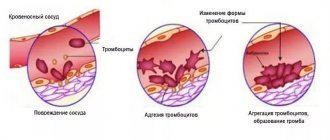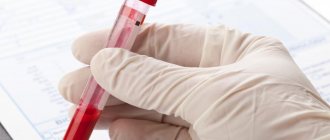What is hCG
Human chorionic gonadotropin is a unique hormone synthesized by chorion tissue almost immediately after the fertilized egg attaches to the uterine wall. This happens a week after the sperm meets the egg. From the first days after fertilization, the amount of hCG begins to increase rapidly and only by 11-12 weeks its growth stops.
Many modern pregnancy tests are based on the quantitative and qualitative composition of hCG beta subunits in urine. If pregnancy has already occurred, then a decrease in the level of this hormone may indicate various pathologies, for example, a threat of miscarriage, ectopic pregnancy, or fetal death.
Who can help with the calculations?
The simplest hCG test that we use at home is the usual pregnancy test. You remember that its data will be a little later than blood tests, but no less reliable. Moreover, the longer the period, the higher the percentage of correct results.
But today many women use a special hCG calculator. With its help you can decipher the results of the study. Initially, you need to determine where to get tested. I have already said that Invitro is the best option, but you can choose another laboratory.
Then you need to determine what data you will define for the calculation:
- cycle date;
- date after ovulation;
- the day when the embryo was transferred, if we are talking about IVF;
- date of missed period.
The system will display the result when you click on a special button. The dynamic result will show whether the pregnancy is progressing correctly and whether there is any pathology. This is what it should look like.
Properties of human chorionic gonadotropin
As we have already found out, the production of human chorionic gonadotropin begins in the first days after implantation of the embryo. HCG can be detected in the blood of a pregnant woman 9-10 days after ovulation. Usually this period coincides with the process of implantation of the fertilized egg into the uterine wall.
The main role of hCG during pregnancy is to maintain the functioning of the corpus luteum of the ovary.
This function of the hormone is made possible due to the unique structure of hCG. The human body contains LH (luteinizing hormone), FSH (follicle stimulating hormone) and thyroid-stimulating hormone. They consist of two subunits (alpha and beta). HCG has a similar structure. All of these substances have an identical alpha unit, but differ only in the beta unit. It is the latter that determines some additional functions of hormones and their stability.
Ovulation in the female body occurs due to LH and FSH. After this process is completed, the follicle transforms into the corpus luteum. Constant releases of luteinizing hormone keep it functioning. But due to the fact that the corpus luteum lives only for a few hours, its other, constant stimulation is necessary. If fertilization does not occur, the corpus luteum dies. In case of fertilization, the production of hCG begins. It is this hormone that maintains the constant functioning of the corpus luteum, because human chorionic gonadotropin acts in the same way as LH.
The decomposition period of human chorionic gonadotropin is longer than that of luteinizing hormone.
Thanks to these properties of hCG, the corpus luteum is constantly stimulated, which allows pregnancy to develop normally. Progesterone will be produced until the very moment the placenta begins to function.
What is hCG?
HCG (human chorionic gonadotropin), hCG (chorionic gonadotropin) is a glycoprotein with a molecular weight of 36.7 kilodaltons.
In its structure, hCG is similar to pituitary gonadotropins, for example, thyroid-stimulating hormone (TSH), follicle-stimulating hormone (FSH) and luteinizing hormones (LH). Human chorionic gonadotropin, like them, consists of two subunits (alpha and beta), which are connected by non-covalent bonds.
The structure of the hCG molecule
The alpha subunit is similar in all four hormones. It has a molecular weight of 14.5 kDa and is encoded by a single gene. The alpha subunit consists of 92 amino acids. The main difference between hormones is provided by the structure of the beta subunit.
The beta subunit of pituitary gonadotropins consists of 114–145 amino acid residues. In hCG, it has a molecular weight of about 22 kDa. Figure 1 shows a diagram of the homology (similarity) of the beta subunit of human chorionic gonadotropin with LH, FSH, TSH.
Most of all, the beta subunit of hCG is similar to luteinizing hormone (75%). This is due to the fact that they interact with the same receptor. The degree of homology with follicle-stimulating hormone is approximately 35%, and with thyrotropin – 46%.
The beta subunit is designated free β-HCG (free β-subunit of human chorionic gonadotropin) or free beta chain of hCG (β-hCG).
The definition of human chorionic gonadotropin refers to studies of the level of the beta subunit or β-hCG, that is, there is no difference between these two concepts.
Where is human chorionic gonadotropin synthesized?
The main site of synthesis is the trophoblast (syncytial layer). Let's try to figure out how it is formed from the moment of conception. After fertilization of an egg by a sperm, intensive cell division occurs. At the end of the first week, an embryo is formed, the outer part of which is called the trophoblast. The trophoblast fuses with the endometrium to form a syncytiotrophoblast. In the future, it will develop into the chorion, which will serve as the beginning for the development of the placenta.
Thus, the trophoblast ensures the attachment of the embryo to the wall of the uterus (endometrium) and promotes the development of the placenta, the main function of which is to ensure metabolism between mother and child.
In the pregnant state, the chorion secretes chorionic gonadotropin. The synthesis of progesterone secreted by the corpus luteum of the ovary is also important. HCG maintains a constant concentration of progesterone, then it begins to be secreted by the placenta.
The absence of the corpus luteum and, as a consequence, low progesterone levels can lead to miscarriage (miscarriage).
Functions performed by hCG
The main role of hCG is:
- maintaining the secretion of progesterone by the corpus luteum and placenta;
- promotes the formation of chorion, increasing the number of villi, their nutrition;
- increasing the synthesis of hormones of the adrenal cortex - adaptation of the body to pregnancy. Glucocorticoids suppress immune reactions aimed at rejecting the child by the mother's body, since the fetus consists of 50% foreign antigens of the father;
- promotes the production of sex hormones (estrogens), the maturation of the male reproductive system.
Almost all women know that the level of hCG is a sign of an existing pregnancy. This is based on the mechanism of action of test strips. The bottom line is that using an immunochromatographic test, you can determine the presence of human chorionic gonadotropin in the urine. Its presence indicates a 90% probability of pregnancy.
In men and women, this hormone can be determined in the presence of a tumor.
Messages sometimes pop up on forums that the hCG level did not indicate pregnancy, but later it turned out that the woman was pregnant. This situation could arise due to incorrect introduction of the ovulation calendar, which led to the test being taken early.
hCG calculator can help you correctly calculate the gestational age . You need to enter the day of your cycle, after ovulation or missed period, as well as the hCG level, after which the calculator will calculate your approximate period in weeks. Studying the level of human chorionic gonadotropin over time will allow you to assess the development of pregnancy. The calculator will tell you the rate of hormone growth and explain whether this corresponds to the norm or not.
General value
Many people believe that hCG is necessary solely to maintain the functioning of the corpus luteum. Actually this is not true. The significance of this hormone is also as follows:
- stimulation of the growth of blood vessels in the uterus;
- repulsion of immunoglobulins from the embryo;
- protection of the implanted fertilized egg from destruction as a foreign body;
- stimulation of the fetal testis, which ensures normal development of the genital organs in boys;
- ensuring the process of lowering the testicles into the scrotum area.
It is interesting to know that in representatives of the stronger sex, hCG is also produced in the body in small quantities. Usually its concentration does not exceed 5 mIU/ml.
The function of human chorionic gonadotropin in men is to maintain the normal process of testosterone production. Of course, luteinizing hormone also copes well with this task, and hCG is its additional support.
Hydatidiform mole and choriocarcinoma
These diseases can be attributed to the abnormal course of pregnancy. However, with these pathologies, the embryo does not develop in the uterus, but dangerous tumors form from chorion cells. Therefore, women do not feel any signs of pregnancy.
The cause of hydatidiform mole is a chromosomal malfunction during the fertilization process. After the fusion of the sperm and the egg, the chorionic villi begin to grow and turn into vesicles with liquid. The fetus either does not develop or dies immediately. Pathologically overgrown chorion particles produce an increased amount of hCG.
This dangerous pathology is accompanied by severe uterine bleeding. Discharge from the genital tract mixed with bubbles is observed. The patient needs emergency surgery. However, hCG levels in non-pregnant women may remain elevated even after removal of the hydatidiform mole.
Chorionic carcinoma is a malignant neoplasm that is formed from cells of the fetal membrane. In this case, the embryo in the uterus does not develop or dies. The tumor can grow beyond the reproductive organs and metastasize to the lungs. Her cells constantly produce the hormone hCG.
The patient is bothered by abdominal pain and spotting that does not respond to conventional therapy. In the early stages, chorionic carcinoma is subject to conservative treatment with antitumor chemotherapy.
Why is a hCG test prescribed during pregnancy?
The first thing that a hCG test allows you to find out is whether pregnancy has occurred or not. Many women mistakenly believe that this is where the role of the hormone is limited. In fact, the role of gonadotropin is much broader. By assessing its concentration in the body, it is possible to find out whether the pregnancy is multiple. After all, each embryo produces a certain amount of hCG.
Blood donation for this indicator is usually prescribed during prenatal screenings at 12-15 and 16-20 weeks. This analysis makes it possible to timely identify certain chromosomal abnormalities in the fetus and suspect developmental defects.
An unscheduled blood test for hCG is prescribed if there is a suspicion of embryonic failure, fetal development retardation, ectopic pregnancy and some other pathologies. It is mandatory to donate blood for human chorionic gonadotropin among patients who have had an abortion or miscarriage.
Men and women donate blood for hCG if they suspect the presence of malignant tumors in the body.
Increased hCG levels
Men and non-pregnant women:
- chorionic carcinoma, recurrence of chorionic carcinoma;
- hydatidiform mole, relapse of hydatidiform mole;
- seminoma;
- testicular teratoma;
- neoplasms of the gastrointestinal tract (including colorectal cancer);
- neoplasms of the lungs, kidneys, uterus, etc.;
- the study was carried out within 4 - 5 days after the abortion;
- taking hCG drugs.
Pregnant women:
- multiple pregnancy (the level of the indicator increases in proportion to the number of fetuses);
- prolonged pregnancy;
- discrepancy between the actual and established gestational age;
- early toxicosis of pregnant women, gestosis;
- maternal diabetes;
- chromosomal pathology of the fetus (most often with Down syndrome, multiple fetal malformations, etc.);
- taking synthetic gestagens.
Decrease in hCG levels
Pregnant women.
Alarming changes in level: discrepancy with the gestational age, extremely slow increase or no increase in concentration, progressive decrease in level, more than 50% of the norm:
- ectopic pregnancy;
- non-developing pregnancy;
- threat of interruption (hormone levels decrease progressively by more than 50% of normal);
- chronic placental insufficiency;
- true post-term pregnancy;
- antenatal fetal death (in the 2nd - 3rd trimesters).
False negative results (non-detection of hCG during pregnancy):
- the test was carried out too early;
- ectopic pregnancy.
Attention! The test has not been specifically validated for use as a tumor marker. HCG molecules secreted by tumors can have both a normal and altered structure, which is not always detected by the test system. Test results should be interpreted with caution and cannot be taken as absolute evidence of the presence or absence of disease when compared with clinical findings and other examination results.
The level of hCG during an ectopic pregnancy will be significantly lower than the specified standards and this will allow you to react to the current situation in time.
Analysis for the level of free b-hCG is used in screening for intrauterine development and the presence of fetal pathologies in the first trimester of gestation. This test is performed between 11 and 14 weeks of embryonic development. Its purpose is to identify possible pathological changes in development in the form of trisomy 18 or 13 pairs of chromosomes. In this way, you can find out the child’s tendency to illnesses such as Down’s disease, Patau and Edwards syndromes.
This test is carried out not to determine the fetus’s predisposition to the above ailments, but with the aim of excluding them, therefore no special indications for the test are required. It is as routine as an ultrasound at 12 weeks.
An increase in hCG levels during pregnancy can occur when:
- multiple births;
- toxicosis, gestosis;
- maternal diabetes;
- fetal pathologies, Down syndrome, multiple developmental defects;
- incorrectly determined gestational age;
- taking synthetic gestagens, etc.
Elevated values can also be seen within a week when tested after an abortion procedure. A high level of the hormone after a mini-abortion indicates a progressive pregnancy.
Low hCG levels during pregnancy may indicate incorrect timing of pregnancy or be a sign of serious disorders, such as:
- ectopic pregnancy;
- non-developing pregnancy;
- delay in fetal development;
- threat of spontaneous abortion;
- chronic placental insufficiency;
- fetal death (in the II-III trimester of pregnancy).
Rules for preparing for a blood test for hCG during pregnancy
- Blood donation should take place in the morning (from 8 to 10 pm). Before taking the test, it is better not to eat fatty foods and not to have breakfast in the morning.
- The day before blood sampling, it is strictly forbidden to drink alcohol, take medications, or engage in physical activity.
- A couple of hours before the test, do not smoke, do not drink anything other than plain water; eliminate stress and emotional instability. It is better to rest and calm down before the test.
- It is not recommended to donate blood after physical procedures, examinations, massage, ultrasound and x-rays.
- If it is necessary to retake the test in order to monitor indicators, it is recommended not to change the conditions for donating blood (time of day, meals).
When is it recommended to donate blood?
After fertilization occurs, hCG in a woman’s body begins to be produced at a very high rate. Every day it doubles several thousand times. Immediately after the meeting of the egg and sperm, the fertilized egg needs approximately 6-8 days to reach the uterus and implant into its wall. From this we can conclude that pregnancy or its absence can be confirmed 9-10 days after the expected date of conception. This is almost a week earlier than the onset of conception can be diagnosed by conventional pharmacy tests.
You might be interested in: 24 weeks of pregnancy
In addition, it cannot be ignored that the sensitivity of pharmacy tests is 2-3 times lower than laboratory testing. In addition, the concentration of hCG in the urine increases more slowly than in the blood.
In a non-pregnant woman, the level of human chorionic gonadotropin is no more than 5 mU/ml. Immediately after the implantation of the fertilized egg into the uterine wall, the concentration of the hormone begins to increase and doubles in the first day, that is, up to 10 mU/ml. The next day - 20 mU/ml, then 40-60 mU/ml and so on. In urine, the concentration of hCG during this period will be half as much, that is, 30 mU/ml. The sensitivity threshold of pharmacy tests is usually from 15 mU/ml, therefore, during this period, a woman will be able to determine the onset of conception using the test.
Despite the convenience of this type of diagnosis, tests often give erroneous results. After all, they may be defective, past their expiration date. In addition, a woman may perform the diagnostic procedure itself incorrectly. A blood test in a laboratory is a more reliable research method. Errors are extremely rare here.
A blood test for hCG allows you not only to confirm or refute the fact of pregnancy, but also to find out the approximate date of birth and to suspect pathologies of fetal development.
Diagnosis and norm of hCG in a non-pregnant woman
The hCG hormone level in a non-pregnant woman is normally 0–5 mU/ml; if its levels are significantly higher, this is a reason to consult a doctor.
There may be a slight increase in gonadotropin concentrations during menopause in middle-aged women. When deciphering the test results, the doctor must take this factor into account. The level of hCG hormone in the blood in this case varies from 0 to 25 mU/ml. It is also worth considering the fact that in different laboratories the normative levels of hormones in the blood may differ significantly, which is associated with the research methods used. Before receiving the result of the analysis, you need to familiarize yourself with it.
Tests for determining hCG
To detect elevated hCG in the absence of pregnancy, a blood or urine test is prescribed. Since in the first option the concentration of the hormone is much higher, blood is taken from a vein in the laboratory.
HCG is by its nature a two-component protein consisting of a typical alpha particle and an atypical beta particle. It is on the uniqueness of the second component of the hormone that all hCG tests are based.
There are several types of analyzes:
- General hCG is carried out if an ectopic pregnancy is suspected, when the gynecologist, when examining the patient on the chair, does not see any signs of pregnancy. The result shows the total concentration of the hormone in the blood.
- Free beta hCG – performed if trophoblastic neoplasms are suspected. Being a tumor marker, beta particles of the hormone make it possible to detect the development of oncological processes in the body.
In addition to a blood test, you can also detect high hCG in urine using ordinary test strips that are available to determine pregnancy. It is better to purchase an inkjet or electronic test, since their sensitivity is much higher and allows you to detect the concentration of the hormone even at its minimum levels.
If the gonadotropin level is not very high, it may happen that the insensitive test will show a negative result, but the laboratory blood test for hCG will be positive. In this case, it is recommended to repeat the study a few days later. It also happens that the hCG blood test is negative and the pregnancy test is negative, but menstruation never begins. You should contact a gynecologist, repeat the test after 3-7 days, and also undergo additional examination.
Preparing for the test
There are a number of rules and requirements that should be followed before submitting biomaterial. This is necessary to obtain correct results. The level of hubbub is the same at any time of the day, but morning urine contains a little more of it. The blood sample must be taken on an empty stomach.
Before testing urine for the presence of gonadotropin, it is not recommended to have unprotected sex, use vaginal and oral contraceptives, as well as vaginal suppositories. Regardless of what biomaterial is taken for analysis, smoking, drinking alcohol and drugs is also strictly prohibited, as this can affect the results. If a woman is taking hormonal medications or dietary supplements that contain the hormone, they should be stopped 1–2 weeks before the test.
Valery Oslavsky: 'If a bone in your foot starts to bulge, urgently...'Read more »
Features of blood donation
In medical practice, it is customary to observe certain standards for blood sampling for hCG:
- Conducting a study if the patient has a delay in menstruation for more than three days or 10-12 days after the date of expected fertilization. It is at this time that laboratory research will have the most accurate results.
- Taking a blood test after a medical termination of pregnancy. Experts prescribe the woman to undergo this test on the second and fifth days after the abortion, which helps ensure the success of the procedure.
- Blood testing for hCG allows you to determine the onset of conception, the duration of pregnancy, and the success of its development. In this case, the analysis is carried out several times over time in order to track the dynamics of embryo development.
- The method allows you to suspect and identify malformations in the fetus and the presence of certain chromosomal diseases (Down syndrome, Edwards syndrome and other diseases).
It is important to note that during diagnosis, the first results of the analysis for human chorionic gonadotropin are not decisive. It is tracking these indicators over time that allows you to fully assess the development of pregnancy. We cannot ignore the fact that each woman’s hCG can fluctuate depending on some individual characteristics.
Blood is donated for hCG at least twice. During this procedure, a sample of human biological material is taken from a vein. In rare cases, laboratories use blood from a finger. This is explained by the fact that both venous and capillary blood act as one biological medium, therefore, both types of biological material contain human chorionic gonadotropin.
Rules for taking the analysis.
It is considered one of the most difficult tests to perform. It is necessary not only to prepare properly, but also to comply with all testing rules in the laboratory. It is better to donate blood in the morning, but if blood is taken in the afternoon, then it is not advisable to eat food 5 hours before the test. Venous blood is taken in an amount of at least 5 ml.
To obtain a clean result, it is necessary to follow a certain number of rules that must be followed before taking the analysis:
- it is necessary to rest the body for 20 minutes before collecting blood;
- remove all physical activity;
- do not eat fatty foods for several days;
- do not drink alcoholic beverages;
- no smoking;
- if you were present at the feast, then the analysis should be brought;
- in cases of using any medications, you must inform your doctor about it.
Blood is donated in specially designated places where such analysis is provided. Not all laboratories adhere to the same system for measuring hCG levels. Because of this, it is better to donate blood for analysis a second time in the same place where it was done before. Such results will be easier for you to compare. For a complete picture, it is better to take the analysis several times, so that it would be possible to trace the dynamics of the growth of the hormone.
Advice for a woman during the procedure
To obtain reliable results, a woman needs to know how to properly take an hCG test. In most cases, blood is drawn from a vein. This procedure is carried out in the morning. At the same time, it is undesirable to eat or drink anything. If it was not possible to donate blood in the morning, the procedure can be performed at other times of the day. The main thing is that after the last meal, at least 8 hours pass before submitting the biological material for research.
It is mandatory to inform the doctor about taking any medications the day before the diagnosis. Some drugs can lower or increase the concentration of hCG in a woman’s blood.
You can drink water in small quantities. It will not affect the hormone levels in the body. But you should definitely refrain from drinking strong tea, coffee, and even more alcohol. There is also no need to eat too fatty or protein foods. This can affect hormonal balance.
Rules for preparing for research
You can independently determine if you are pregnant using test strips at home. As for the blood test, you need to take it only in the laboratory. If a woman wants to conduct an examination for hCG, then on what day it is correct to do this, it is better for her to check with her doctor. In order for the research result to be reliable, gynecologists recommend adhering to certain preparation rules.
Women undergoing hCG the day before the examination should be less nervous, remain calm, avoiding depressive and stressful conditions. As for physical activity and sports, it is recommended to postpone them to another day. You also need to pay attention to nutrition: limit the consumption of salty, smoked and fatty foods.
A blood test for protein is taken early in the morning. On the day of donating blood, you should not have breakfast: your stomach must be empty. The interval between food intake and examination should be at least 8 hours. In addition, you can come to the laboratory a little earlier on this day to give your body a chance to rest and recover. Following the same rules as for donating in the morning, you can donate blood for hCG in the evening; the blood test will show reliable results. However, you should consult your doctor before doing this.
If a woman wants to determine pregnancy before the delay, she will have to take the test again. This is done in order to identify indicators over time. In this case, you must maintain an interval of at least 2 days. You cannot take hCG during viral and other diseases: testing may show an incorrect result.
Where to get tested
Blood can be donated for hCG at any antenatal clinic. Private clinics also provide the service, however, there this type of diagnosis can cost much more. Usually you have to wait up to 5 hours for results.
Commercial clinics often do not have their own laboratory. They are only intermediaries for sending results to larger centers. In this regard, the result of the study will have to wait longer.
Features of application
Chorionic Gonadotropin preparations can be purchased at any pharmacy; a prescription is not needed. They are produced in the form of injections administered under the skin. Before administration, the product must be diluted with distilled water, which can also be purchased at the pharmacy. The effect of the injections is quite long - 5-6 days.
On a short course of using anabolic steroids, there is no need to use Gonadotropin, but if anabolic steroids are used for more than two months, then hCG is prescribed in two injections per week, the dosage should not exceed 250-500 IU. The second way to use the hormone is after a course of taking anabolic steroids. In this case, the single dose of the drug is 2000 IU, and injections are given once every two days. The maximum course of treatment is three weeks.
For professional athletes, such drugs are prescribed on an ongoing basis if there are no breaks between courses of anabolic steroids. In this case, medications are taken in minimal dosages, and every five weeks a break is taken for one to two weeks.
Side effects include the appearance of rashes on the skin of the face and body, improper functioning of the hypothalamus and pituitary gland, atrophy of the testes, hair loss and enlargement of the prostate gland. In women, mastitis and the appearance of excessive muscle mass may be added to these symptoms.
You can find out about the level of this substance in the blood by passing the appropriate test. To do this, you should visit an endocrinologist. Self-prescription of hormonal medications is strictly prohibited, as the risk of side effects is extremely high. Do not neglect your health and if you have any complaints, seek help from a medical facility.
One of the important diagnostic methods that are carried out during pregnancy is analysis. This study can determine fertilization as early as the fifth to seventh day after conception. In addition, with the help of this analysis it is possible to determine the exact period, because the indicator of this substance changes depending on the week of pregnancy.
From this article you can also find out what are the reasons for the deviation of hCG from the norm, the meaning of the hormone in non-pregnant women, the rules for preparing and conducting the study.
HCG stands for human chorionic gonadotropin. This substance is an important hormone produced by the tissues of the embryo when it attaches to the uterus. HCG is a hormonally active protein.
Therefore, an increase in the value of this substance usually indicates an interesting situation for a woman. However, sometimes in women who are not pregnant, the level may also increase. This condition is influenced by various causes, including various pathologies. This hormone can also be detected in males, this is explained by the fact that a small amount of it is produced.
An hCG test allows you to determine the exact period of pregnancy.
In addition, the study of this hormone will help determine whether there is a risk of various abnormalities in the formation of the fetus. A common pregnancy test is to determine the level of the hormone in the urine. But with its help it is impossible to determine the exact timing in comparison with the study of hCG in the blood.
The main role of the hormone is the preservation and proper development of pregnancy, as well as blocking the menstrual cycle. In addition, human chorionic gonadotropin helps activate the synthesis of hormones that are necessary during pregnancy, namely progesterone and estrogen.
Preparing and performing diagnostics
To get the correct level result, you must adhere to the rules for preparing for the study.
Before taking the test, experts advise:
- Avoid sexual intercourse the day before the test.
- Do not eat food or drink any liquid other than water for four to six hours.
- Limit physical and psycho-emotional stress.
- Inform a specialist about the use of drugs such as Pregnil, Horagon, the use of Utrozhestan and Duphaston
Blood for hCG is taken from the venous region. To do this, treat the area of the vein puncture with alcohol. Then the shoulder area of the upper limb is clamped with a tourniquet and the required amount of blood is drawn using a syringe.
You can donate blood for the hormone from the fifth day, but statistically, results are found in only 5 percent of pregnant women.
In most cases, the study shows pregnancy only on the eleventh day after fertilization.
When a pregnant woman does not know the exact day when conception occurred, it is recommended to take blood tests 3-4 weeks after the first day of menstruation.
Experts usually recommend testing your blood for hormones several times at intervals of a couple of days. It is important to say that false results can occur as a result of improper blood sampling or defective reagents.
Gonadotropin levels depending on the stage of pregnancy
An hCG test allows you to confirm the fact of conception and determine the timing of pregnancy. To obtain reliable data during diagnosis, the timing of the release of the egg from the ovary must be taken into account. For convenience, this period is denoted by the abbreviation DPO, that is, “day after ovulation.” Typically, such tests are carried out among women planning motherhood.
You might be interested in: Pregnancy calendar by week
In the initial stages, the growth of human chorionic gonadotropin does not occur at such a rapid pace as, for example, at 6-7 weeks. In this case, the results of the study may look something like this: “12 DPO – 20 mIU/ml.” All laboratories use an individual results table, which records data on the minimum, average and maximum hCG levels at a given time. The countdown starts from day 7 until day 42 of DPO.
If we take the average values, then at 7-8 DPO the minimum value will be no more than 2 mIU/ml, the average will be up to 5 mIU/ml, and the maximum will be up to 10 mIU/ml. In comparison, 42 DPO has a minimum of 28,000 mIU/ml, an average of 65,000 mIU/ml, and a maximum of 128,000 mIU/ml.
There are also certain tables that are used to compare results during pregnancies that have already taken place. Here, the beginning is taken from the moment of implantation of the embryo into the wall of the uterus (implantation of the fertilized egg or DPP) until 42 weeks. The table contains days of pregnancy and human chorionic gonadotropin concentrations.
It is important to note that in vitro fertilization (IVF) uses different tables. The days and indicators for embryos implanted 3 and 5 days after fertilization of the egg will be indicated here. Read more about hCG by week in this article.
Let us remind you that the interpretation of the results depends on the laboratory in which the woman was tested, and interpretation is performed exclusively by a specialist.
Malignant tumors
The cause of high hCG levels in non-pregnant patients may be malignant neoplasms. This hormone is a kind of tumor marker. An increased concentration of human chorionic gonadotropin is observed in germ cell tumors. These neoplasms are localized in the ovaries or mediastinum. They are formed from primary cells that are formed during the prenatal period.
HCG in non-pregnant patients may also increase with malignant tumors in the following organs:
- rectum and colon;
- kidneys;
- lungs;
- uterus.
An increase in the concentration of human chorionic gonadotropin is not always a sign of dangerous neoplasms. However, the patient should be tested for tumor markers and undergo a series of instrumental examinations.
Decoding the received data
Having received the results of the study, the specialist compares these indicators with established standards. These indicators must be assessed over time. If the hCG level increases, this indicates normal development of the embryo. If, after an increase, human chorionic gonadotropin begins to fall, we are talking about various pathologies, such as fading or termination of pregnancy. Based on the amount of hCG in the blood, a single or multiple pregnancy can be diagnosed.
Two or more embryos often develop after IVF. In this case, the concentration of the hormone in the blood will be several times higher. In addition, hCG determines the presence of developmental pathologies in the fetus. In addition to hCG, the woman is recommended to undergo additional medical examinations. These include ultrasound, chorionic villus testing, umbilical cord blood analysis and others.
In the second trimester, a triple analysis helps to assess the successful development of pregnancy, including a blood test for hCG, ACE and estradiol.
ACE stands for alpha fetoprotein. This substance acts as an oncological marker in the human body. If the level of ACE and estradiol is within the normal range, and hCG is significantly deviated, there is every reason to suspect that the child has Down syndrome. You can read more about this disease here.
If all three indicators are low, the chromosomal disease Edwards syndrome or Patau syndrome is suspected. Additional medical diagnostic techniques help confirm or refute these suspicions.
Suspicion of Turner syndrome is caused by a decrease in the levels of ACE and estradiol with normal hCG levels.
If the doctor suspects the presence of a genetic pathology in a child, do not panic ahead of time. Forecasts are often wrong.
Taking medications
HCG levels in non-pregnant patients may be elevated due to medications. False test results are most often observed during a course of treatment with hormonal drugs containing human chorionic gonadotropin. These include:
- “Horiogonin”.
- “Profasi.”
- “Horagon.”
- “Rotten.”
- “Chorionic gonadotropin.”
These medications are most often prescribed by injection. They are used to treat menstrual disorders, infertility, and also in preparation for IVF.
For this reason, doctors recommend stopping the use of hormones a few days before the test. However, these drugs are often prescribed according to a special regimen, and the course of treatment cannot be interrupted. In such cases, it is necessary to take a test after completing hormonal therapy. When taking such medications, the study in most cases gives unreliable results.
Nowadays, some women use hCG drugs to build muscle mass. This can also cause false test results. Doctors categorically prohibit the use of hormonal drugs for sports purposes. This can provoke serious endocrine disorders, and even the development of tumors.
Can the results be wrong?
A blood test for hCG is considered one of the most accurate and reliable methods. It is for this reason that this research method has found such wide application in medical practice for more than one decade. Despite this, you cannot insure yourself against mistakes. Therefore, let's look at why false positive and false negative results can occur.
False positive response
Sometimes the analysis shows a high level of hCG in a woman’s body, but pregnancy is not diagnosed. Why is this happening:
- An increase in the concentration of human chorionic gonadotropin in a woman can occur in situations where the patient was previously taking hormonal medications.
- A high level of hCG is found in tumor formations in the body.
- An increase in the level of the hormone is often diagnosed with hormonal disorders in the body due to diseases of the thyroid gland.
In any case, if suspicious test results occur, it is recommended to retake the test after a few days.
False negative
Sometimes it happens that pregnancy has occurred, but the hCG test shows a negative result. This happens because pregnancy is diagnosed too early, when the fertilized egg has not yet attached to the uterine wall and the production of human chorionic gonadotropin has not yet begun.
Negative or very low levels of hCG are often found in ectopic pregnancies. To confirm this diagnosis, it is necessary to conduct a repeated examination every two days, as well as use ultrasound.
Reasons for increased hCG in the absence of pregnancy
Elevated hormone levels can occur in women for various reasons. In most cases, this is associated with a normal or pathological pregnancy. Therefore, if the hCG test is positive, an ultrasound of the uterus is first performed to determine the presence of an embryo.
There are other reasons for increased hormone levels besides pregnancy:
- Uterine chorionic carcinoma is the result of malignant transformation of the vaginal epithelium. This process can be caused by abortion, childbirth, or ectopic pregnancy. During the process of degeneration, the trophoblastic formation produces hCG, which will be determined by the test.
- Hydatidiform mole is the result of the metamorphosis of a fertilized egg, the development of which is disrupted by a chromosomal disease. Instead of developing normally, the chorionic cilia grow into bubbles with fluid inside.
- Uterine fibroids are neoplasms located on the inner wall of the uterus. Due to a lack of estrogen, fibroid cells divide chaotically, increasing its size. The neoplasm cannot degenerate into a malignant tumor, but requires surgical intervention as it continues to grow rapidly.
- Corpus luteum cyst of the ovary is a periodically formed gland at the site of the follicle. It produces progesterone and hCG, and with the end of menstruation it disappears or decreases in size. If the cyst does not resolve on its own within 3 menstrual cycles, it is removed surgically.
- Tumor formations in the gastrointestinal tract, lungs or kidneys.
If the hCG level in non-pregnant women is significantly higher, this may be a consequence of recent childbirth or miscarriage. With an early abortion, the concentration should decrease after 4–7 days; if this does not happen, it can be assumed that the procedure was performed poorly and the embryo continues to develop. A slight increase in the hormone in the blood is observed during menopause and the hot flashes that precede it. Taking hormonal drugs to treat infertility also makes the test result positive.
What indicators should be normal?
Only a qualified doctor can judge to what extent certain results of blood sampling for the level of human chorionic gonadotropin correspond to the norm. Factors such as the woman’s age, the presence of chronic diseases, multiple or singleton pregnancy, and so on must be taken into account.
For convenience, doctors use special tables that help compare the data obtained with the upper and lower limits of acceptable standards. In addition, such tables help to accurately determine the duration of a developing pregnancy.
It is known that it is almost impossible to accurately determine the date of fertilization of the egg. In this regard, doctors count conception from the first day of the last menstruation. These are obstetric weeks, which are counted from the moment the mature egg leaves the ovary.
You might be interested in: 13th week of pregnancy
Unlike embryonic, obstetric timing is imprecise and can be off by 1-2 weeks. The true period after conception, that is, embryonic, is always 7-14 days less than the obstetric period. This depends on the length of the woman's menstrual cycle.
An hCG test helps to find out with high certainty the exact period after conception. After all, we know that human chorionic gonadotropin begins to be synthesized in the body from the first hours after embryo implantation. By assessing hCG in the blood, you can find out the time of conception. Ultrasound helps confirm these data.
In this table you can find the upper and lower limits of hCG for a given week of pregnancy.
How to decipher the result
HCG appears in the body of a pregnant woman already 8 hours after fertilization. A blood test for hCG will show whether pregnancy has occurred or not. In addition, regular hCG tests will indicate possible abnormalities in the development of the fetus and determine health problems of the expectant mother.
The doctor must decipher the results obtained. Only he will be able to determine whether everything is normal for a pregnant woman. When deciphering study forms, one should take into account whether the pregnancy is singleton or multiple. When carrying twins, the hCG level will be higher than when carrying 1 fetus.
For women planning to become a mother, a special table has been developed, which takes into account the day after ovulation (DPO) and hCG level. There is no such increase in indicators as in pregnant women, and the countdown begins on the 7th day of the cycle.
There are no uniform standards for hCG levels: different clinics have their own standards. However, there is an approximate table with numbers that determine the correspondence of the results obtained with standard indicators for each week.
Taking into account that it is difficult to find out the exact date of conception, gynecologists take the first day of the last menstruation as the determining date. In this case, the obstetric period of pregnancy begins from the moment of ovulation. As for the hCG analysis, it is used to determine the exact period of embryo development. This is explained by the fact that from the moment the embryo attaches to the wall of the uterus, the level of the hormone begins to increase significantly. Therefore, the tables indicate the embryonic, and not the obstetric, period.
Important information: HCG norm at 4 weeks of pregnancy
In the first trimester, the rate increases by almost 60% in a few days. This continues to increase until week 12, after which the hCG level begins to decrease. Women who take the test and are found to be non-pregnant will see a figure of 5 IU or less on the study form. If a woman takes hCG the day before her missed period, she may get readings of 5 to 25 IU, which means an inaccurate chance of conception.
When the hormone level is 25 IU or higher, this means that the woman will soon become a mother.
Regardless of the period, the blood test must be done again in the same clinic where it was done the first time. Reduced levels of the hormone occur when there is a possibility of developmental disorders in the child. You also need to be careful about inflated indicators: these data do not always indicate good things. If a woman is not pregnant with twins (triplets), in such cases, Down's disease or Edwards syndrome may occur in the fetus, or diabetes mellitus and genetic problems in the mother.
Advantages of blood tests over pharmacy tests
A woman can find out whether pregnancy has occurred using a regular test, which can be purchased at a pharmacy. These tests contain certain reagents that react with hCG. If conception has occurred, the test will show two stripes. This diagnostic method is very convenient because it can be done at home.
The disadvantage of tests before laboratory testing is that they can only detect the presence of pregnancy. It is impossible to determine the place of attachment of the egg and the correct development of the embryo. In addition, a blood test can detect the onset of conception earlier than a conventional test.
Carrying out a blood test for human chorionic gonadotropin over time also helps to suspect the presence of chromosomal abnormalities in a child and promptly recognize the threat of miscarriage, ectopic pregnancy and fetal death. The test will not be able to provide such information.
Decoding the result.
Once you have the results in your hands, you will soon want to know what it says. No one in the laboratory will give you a complete transcript; they always have enough of their own work. The doctor must explain the result obtained, but it is not always possible to get an appointment with him on the same day. Here the question arises, how can you find out the result yourself?
As stated earlier, not all laboratories operate alone. Therefore, a certain system of generalized data has been developed. Measurements are made in honey per milliliter (mU/ml):
- up to 5 – This value shows that there is no pregnancy, and your health is in perfect order;
- from 5 to 300 – possible pregnancy (1 or 2 weeks). After receiving such results, the doctor will refer you for a second test;
- from 1500 to 4880 – pregnancy for a period of 2-3 weeks;
- from 10,000 to 315,000 – pregnancy for a period of 3-4 weeks;
- from 20,000 to 100,000 – the presence of pregnancy for a period of 4-5 weeks.
It should be noted that the hCG rate during pregnancy on ovulation days will be higher than the standards if you have several fertilized eggs. For example, if there are 3 developing embryos, hCG in the first weeks will be approximately 15 to 450 mU/ml.
This analysis will help you detect the presence of pregnancy at the very beginning. Compare the results obtained with the entered standards and determine at what stage of pregnancy you are. When planning pregnancy, monitoring hCG levels is necessary. It helps doctors determine the developmental status of the fetus, without unnecessary interventions.
Types of analysis for hCG
In medical practice, several types of blood tests for human chorionic gonadotropin are used. This is a general analysis for hCG and the detection of free beta-hCG in the body. Let's take a closer look at them.
General
This type of diagnostic technique is used to determine the occurrence of egg fertilization in the early stages, when conventional tests are not yet able to determine conception. In the second trimester, a test for total human chorionic gonadotropin is prescribed in the form of a triple test, which was described earlier in the article.
Free beta-hCG
This type of examination is used for hydatidiform mole, choriocarcinoma, testicular oncology and suspected other pathologies in the fetus. In the first and second trimester, this test is used to assess the baby's risk of Edwards and Down syndrome. If there are deviations from the norm, the woman is placed at risk and referred for additional studies.
What to do if hormone levels are high?
To avoid many unpleasant and even dangerous consequences of pathologies that cause excess hCG in the body, you need to consult a doctor immediately after the test.
Timely examination and selection of treatment increases the chances of a favorable outcome. If the cause of an increase in hormone levels is oncology, it is necessary to be examined by an oncologist and begin therapy as quickly as possible. If hCG has risen due to taking hormonal medications, it is worth reviewing their prescription together with your doctor. A decrease in hormone concentration is possible only if a tumor, cyst, fibroid, etc. is completely eliminated. If high levels persist in a non-pregnant woman for more than a week, there may have been an early miscarriage. If the test shows a positive result, but the increase in the hormone is not justified, a repeat test is prescribed. A false positive result may be due to laboratory technician error, poor-quality reagents or test strips.
Will the test show pregnancy before a missed period and when is the best time to donate blood?
Many girls are interested in the question of how long the fertilization field must pass in order to determine the onset of pregnancy before the delay? The most reliable method for detecting conception before a missed period is a laboratory blood test for hCG. It is recommended to do it 7-9 days after the expected date of conception.
During this period, active production of human chorionic gonadotropin begins. If the study showed a hormone concentration of more than 7 mIU/ml, there is reason to suspect pregnancy. When the study is repeated and the pregnancy progresses successfully, the hCG level increases several times every day.
It is recommended to donate blood for human chorionic gonadotropin 7-10 days after trying to conceive.
When will the result be
So, you have decided to have a baby and it is important for you to know whether pregnancy has occurred or not. In this regard, women often ask the question on what day of the cycle can they expect that hCG will indicate pregnancy.
Everything here is individual, although there are generally accepted norms. It is important to understand that the level of the hormone increases all the time, that is, if two hours ago it was one, then now its parameters will increase. If you know exactly the day of conception, then you can safely check it on the 12th day.
Girls under the supervision of a doctor may be prescribed tests on the 8th day after the expected conception. When will pregnancy show if the date of conception is unknown? Feel free to contact the laboratory after 4 weeks from the date of your last period. What data can be included in the analysis and what does it mean?
In a nutshell it's like this:
- the result shows 5 mIU/ml and below – pregnancy has not occurred;
- analysis parameters up to 50 mIU/ml – the result may be in doubt;
- above 50 mIU/ml – you are pregnant.
In general, the timing of an “interesting situation” has its own hCG level. It looks something like this.
| Days of pregnancy | HCG level (med/ml) |
| 12-13 days | 0-110 |
| 14-15 days | 110-225 |
| 16-17 days | 210-1045 |
| 18-19 days | 1048-3850 |
| 20-21 days | 1950-6500 |
| 22-23 days | 3300-1890 |
| 24-25 days | 5700-17000 |
| 26-27 days | 9090-23300 |
| 28-29 days | 11200-30800 |
| 30-32 days | 16600-43200 |
| 33-35 days | 35600-73670 |
| 36-38 days | 49080-42400 |
| 40-42 days | 58200-112890 |
| 6 weeks | 64500-116300 |
I note that the hCG results obtained during pregnancy in mIU/ml parameters cannot be the same for different women. Here everything is individual, which allows for some deviations with identical terms of the “interesting situation”.
But to ensure the harmonious development of the embryo, I advise you to always take tests in the same laboratory. One of the options is Invitro, which has established itself as a proven and reliable medical institution.
Reason for donating blood
Many women are planning pregnancy. This is the right decision, because such an important issue should be taken seriously. The reason for getting tested is undoubtedly a delay in menstruation. Women whose cycles are irregular can donate blood even before the delay, because it often happens that pregnancy is diagnosed even before menstruation begins. Be that as it may, donating blood immediately after unprotected sex does not make sense. To get an accurate result, it is better to wait a few weeks.
What is the normal value for non-pregnant women?
Normally, hCG in non-pregnant women should not exceed established limits; its increase or decrease indicates the development of pathologies in the genitourinary system. The table will show what hCG should be in women who are not carrying a child:
| Index | Normal limits |
| Color | from 0.85 to 1.05 |
| Leukocytes | from 4 to 8.8 109/l |
| Reticulocytes | from 2% to 12% |
| Band neutrophils | from 1 to 6 |
| Segmented neutrophils | from 47 to 72 |
| Basophils | from 0 to 1 |
| Monocytes | from 3 to 11 |
| Lymphocytes | from 19 to 37 |
| Platelets | from 180 to 320 109/L |
| ESR | from 2 to 15 mm/h |
The normal level of hCG in the blood of non-pregnant women should be from 0 to 5.
What else do you need to know
Low levels of human chorionic gonadotropin are an undesirable phenomenon exclusively for a woman expecting a baby. In other situations, this hormone should not exceed 5 mIU/ml. If in a man or a non-pregnant girl these levels exceed 5-10 mIU/ml, you should definitely look for the cause. The fact is that hCG acts as a tumor marker and indicates the presence of an oncological process in the body.
Causes of elevated hormone levels:
- benign or malignant formations in the testicles or uterus;
- oncology in the gastrointestinal tract, kidneys, liver;
- formations in the respiratory system.
If the hormone level constantly increases over time, this indicates the process of cancer cells spreading to organs located near the diseased area. Sometimes human chorionic gonadotropin increases when treated with certain medications.
The role of the hCG hormone in a woman’s body
Gonadotropin begins to be actively produced in the female body after fertilization of the egg. It aims to stimulate the production of progesterone and estrogen, which help maintain pregnancy. HCG also stops the maturation of new eggs and the onset of menstruation.
The level of human chorionic gonadotropin in a woman’s blood or urine makes it possible to determine the presence of pregnancy and its duration even without an ultrasound. The hormone is a marker that is used to guide the monitoring of the course of pregnancy. A decrease or increase in its level indicates the presence of problems in the development of the fetus.
In the body of a non-pregnant woman, gonadotropin does not perform any functions and is not normally produced. If high levels of hCG are observed in the urine or blood, then either the test results are unreliable, or there is a neoplasm in the body that can produce this hormone.
Why track growth dynamics?
A pregnant woman regularly undergoes tests for human chorionic gonadotropin throughout the entire gestation period. The first biochemical screening is prescribed at 11-13 weeks, the second at 16-18 weeks. Why is it necessary to check your hormone levels?
By the dynamics of hCG growth, you can understand whether gestation is proceeding normally and the fetus is developing. High or low levels of the substance indicate problems with the child’s development or a threat of miscarriage.
Low hCG may indicate:
- ectopic or frozen pregnancy;
- risk of miscarriage;
- intrauterine growth retardation;
- placental insufficiency.
Elevated hormone levels indicate:
- multiple pregnancy;
- chromosomal abnormalities, for example, Down syndrome (the ratio of hCG and PAPP-A is checked);
- gestosis;
- diabetes.











